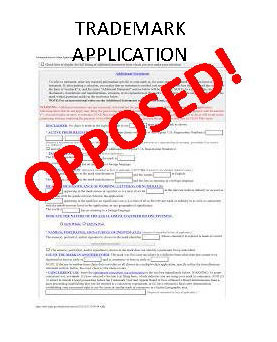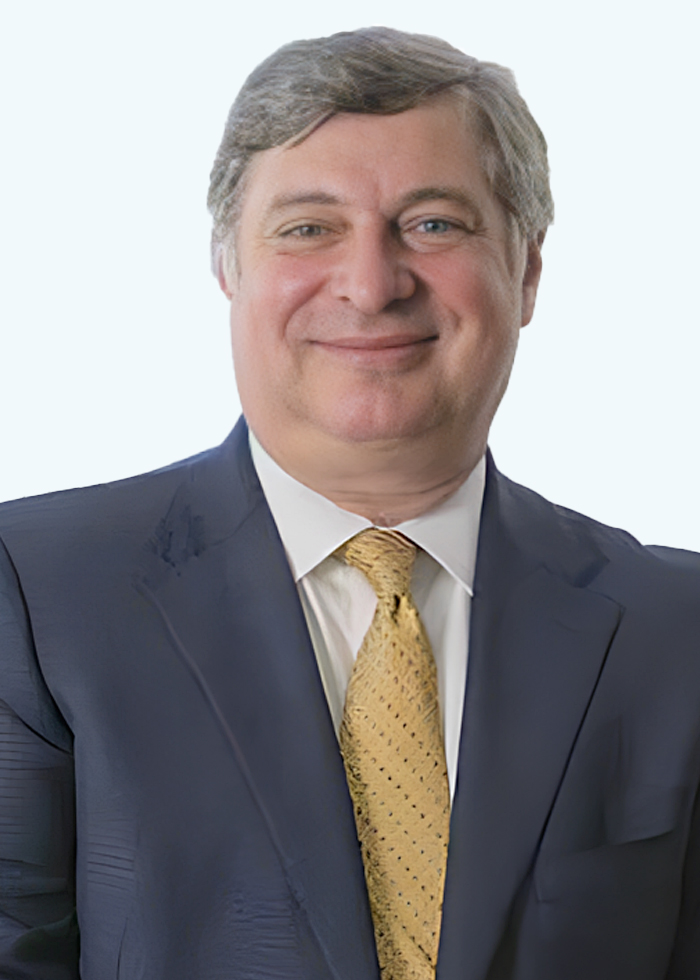Elizabeth Gearhart interviews James Klobucar of Gearhart Law about trademark oppositions and what to do if you face one when applying for a trademark.
Hi! I’m Elizabeth Gearhart and I’m sitting here with James Klobucar, Senior Associate at Gearhart Law, and also very good at doing trademarks.
Thank You.
Q – Suppose James filed a trademark application for me, then he came back to me later and said there’s an opposition to your trademark and I’m like what? How did that happen? What does that mean? So James, what happens after you file the trademark application?
A – So after you file an application there’s two main hurdles or two main thresholds that you have to overcome in order to get the trademark. One is, you have to take care of all the technical requirements before the eyes of the Patent and Trademark Office, and once they’ve deemed that you’ve met all of those qualifications, they then publish the application for 30 days in a publication period. And that publication period gives any member of the public, that is any third party, 30 days to comment publicly and try to oppose your mark if they think it would harm their business. They could also, if they so choose within that 30 days, let’s say they need additional time to make a decision, they can file for an extension of time to file that opposition as well. So if you’ve gotten an opposition on a trademark what that means is there’s some third party out there that believes that your mark will somehow materially harm their business or a mark that’s used in conjunction with some sort of good or service that they offer.
Q – So then what happens? Do you fight for me and say ‘no these people are wrong she deserves a mark’, I mean what happens next?
A – You have to take every case on a case by case basis and determine the merits. Opposition is essentially a court case; it follows Federal Rules of Civil Procedure. There’s discovery, you can take depositions, and all of this happens throughout a prolonged time period. The opposition overall can go for easily a couple years. Obviously you want to get out of it as soon as you can. Most of them settle before a final decision by the trademark trial and appeal board but that’s in a nutshell what you’re going to be looking at.
Q – From the time I filed the application to the time that the opposition could be filed, how long is that? Is that a month, two months?
A – Usually you’re going to be looking at around, I’m going to say, maybe five months give or take. There’s going to be some variance in there, but what happens is, about three months after you file a trademark application it’s going to be assigned to an exam and an attorney who has to review it. If they send out an office action they give you six months to respond to that office action, so if you take that six months obviously that’s going to change the timeframe. But going off the assumption that you respond in an expeditious manner or that you don’t receive any office action at all, then they schedule it for publication. Once you have that publication date it’s for 30 days and you normally take a few weeks once all the issues have been taken care of, so right around five months give or take.
Q – So can I use it during this time?
A – Yes, I mean you can still use it. You should always review the merits of the opposition closely and determine if there is any infringement potentially by any party or what’s really being alleged. You may decide that the risk is too great, you may want to put use of the mark on hold to limit damages and that sort of thing, but unless counsel instructs you otherwise generally both parties will continue to use the mark during that time frame.
Q – But if you’ve done a trademark search then hopefully this would have come up in the search.
A – I mean that would be the idea and in all likelihood it may have, obviously, if you get to the point of publication the trademark. The trademark office doesn’t think that there’s any issue so you’ve passed that threshold, because the trademark office does review your application in light of third party federal registrations. It may be that someone has an unregistered use, which again in all likelihood, we should have found it in the search and already be aware of and counseled you on it. At the end of the day people are subjective, they can form their own opinions if they think that something is too similar. Trademarks are ‘if you don’t use it you lose it’ type of things so you do have to actively police the mark. Some members of the public or even corporations will employ watch services to watch over the trademark Gazettes and the publications and basically will file an opposition (or an extension at least) and engage you at that level if anything is even remotely close. At times it may be much ado about nothing and we may be able to dispatch it pretty easily. Other times it’s going to be much more nuanced. It’ll just kind of depend.
Q – So the sequence is, you file the trademark application, you go through all this stuff with the trademark office and they say okay, well we think you can have the trademark but we’re going to make sure that nobody else wants to fight you on it, and so then they publish it and then somebody can do a trademark opposition?
A – Right.
Q – So the trademark office thinks you should have it but somebody else can say ‘I don’t think they should have it’.
A – Right. Then eventually if you progress far enough the Trademark Trial and Appeal Board (TTAB) will render a decision on who’s correct or not.
Q – So then what if they say you can have it and this other person was wrong?
A – At that point then they would have issued a decision, or you’ve reached a settlement to that respect. You should be allowed to proceed to registration at that time and they’re not going to be able to come back to you.
Q – Does that cost a lot? You have to pay legal fees.
A – For an opposition, yeah. I mean an opposition, as I said before, it can go on for some amount of time. You have discovery, you have briefs, you have, potentially, depositions and all of those good things that come along with that so you can certainly spend a fair amount. Obviously it’s going to depend a little bit how far through the process that you go. Through some initial discovery (depending on how complex it is) you could easily spend twenty five thousand plus.
Q – So I should probably balance things at that point then. So let’s say I started using my trademark for a couple months, got my first sales, so that I could register it as a trademark in use across state lines. I did an internet sale, and then six months later, so it’s been like maybe eight months for me, I get this opposition. So then I have to weigh how much marketing have I done, how much branding have I done, with this name, versus fighting the opposition with legal fees, right?
A – Right. You have to weigh the pros and the cons, and your investment versus the budget, versus the brand power that the mark holds, and rebranding has to be part of that as well in terms of your considerations.
Q – So could you rebrand just a little bit? Maybe sometimes it would work like, instead of fuzzy babies, fuzzy infants, and they’ll say ‘okay, well fuzzy infants is far enough away from our fuzzy babies.’
A – Yes, it could. It’s going to depend a little bit on the third party that you’re dealing with and the other types of marks potentially on the trademark register. If you can reach a reasonable resolution with them on something like that then certainly you’re entitled to do so.
Q – Okay so sometimes you might have to change it but maybe you could not have to change it so much it’s unrecognizable right?
A – Right. I mean yeah again it’s going to depend on what mark the other party has or believes that is in conflict with yours, but yeah absolutely at times you may be able to preserve some portion of the mark.
Q – So you really do, if you get a trademark opposition, you really do need to be working with an attorney and you need to look at these different avenues, about settling, about slightly changing your mark, about dropping your mark altogether or about fighting your way through to the finish, right?
A – Right. I agree, I mean process in and of itself is pretty technical. It’s very deadline driven and if you miss deadlines people can move for a default judgment in their favor, at which point you could be out of luck. Of course you can then put in your own motion in opposition to the default, etc., but again it’s going to help them. It’s going to help to have an attorney help lead the way through it. Outside of that it’s going to be very difficult to handle.
Q – So trademarks aren’t as easy as they should be or like they seem to be. You can’t just file a trademark application and get your trademark and go on your merry way. if you’re really serious about your business you do want to hire a trademark attorney to help you do the search, try to keep you out of hot water, opposition, those kinds of things, and then help you the rest the way if anything happens.
So this is the guy to call. This is James Klobucar, you can reach him at James@GearhartLaw.com.
A – Yes, just give me a call if you have any questions and I’ll be happy to assist you with your trademark. 908-273-0700.


